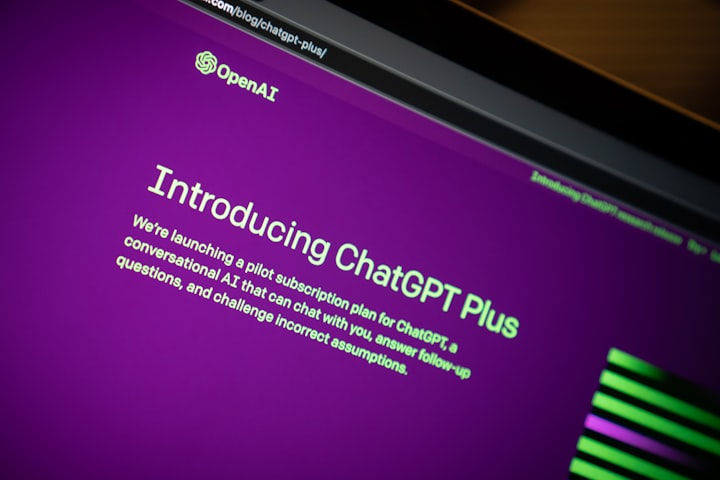
ChatGPT is a language model developed by OpenAI, based on the GPT-3.5 architecture. It is an AI-powered chatbot that uses natural language processing (NLP) to communicate with users. ChatGPT is designed to understand human language and respond accordingly, providing a conversational experience that feels natural and intuitive. In this note, we will explore the history of ChatGPT, its architecture, how it works, its applications, and the impact it has had on the field of AI. ChatGPT is a large language model developed by OpenAI, based on the GPT-3.5 architecture. It has been trained on a vast amount of text data, making it capable of producing coherent and natural-sounding responses to a wide range of input prompts. In this note, we will delve deeper into ChatGPT's architecture, training data, and capabilities.
History
OpenAI first introduced the GPT (Generative Pre-trained Transformer) series of language models in 2018 with the release of GPT-1. This was followed by the release of GPT-2 in 2019, which gained significant attention for its ability to generate coherent and plausible text. However, due to concerns about the potential misuse of the technology, OpenAI initially released only limited access to the GPT-2 model.
In June 2020, OpenAI released GPT-3, the largest and most powerful language model yet. GPT-3 was trained on a dataset of over 45 terabytes of text, making it capable of generating human-like responses to a wide range of prompts. The release of GPT-3 marked a significant milestone in the development of natural language processing technology.
ChatGPT is based on the GPT-3.5 architecture, which builds on the capabilities of GPT-3 while introducing new features and optimizations. ChatGPT was first introduced in early 2021 and has since gained popularity as a powerful tool for natural language communication.
Architecture
ChatGPT is based on the GPT-3 architecture, which is a transformer-based language model developed by OpenAI. The transformer architecture is a type of neural network that is particularly well-suited for natural language processing tasks. It uses a series of attention mechanisms to allow the model to weigh the importance of different parts of the input sequence when generating output.
The GPT-3.5 architecture is an extension of the GPT-3 model, which uses a much larger training dataset than its predecessor. This allows the model to better capture the complexities of natural language and produce more sophisticated responses to input prompts.
Training Data
ChatGPT has been trained on a massive dataset of over 570GB of text data, comprising a wide range of sources including books, websites, and other written materials. This training data includes text in a variety of languages, allowing ChatGPT to produce responses in multiple languages.
To ensure that the model is capable of producing appropriate and non-offensive responses, the training dataset has been carefully curated and filtered. In addition, OpenAI has implemented various measures to prevent the model from producing harmful or biased responses.
Capabilities
ChatGPT's primary capability is natural language processing, allowing it to produce human-like responses to a wide range of input prompts. Its abilities include answering questions, generating text, and engaging in conversation. The model is also capable of performing a variety of other language-related tasks, such as summarization and translation.
One of the most impressive capabilities of ChatGPT is its ability to generate text that is difficult to distinguish from text written by a human. This has led to concerns about the potential misuse of the technology, particularly in the creation of deepfakes and other forms of disinformation.
Applications
ChatGPT has a wide range of potential applications in areas such as customer service, education, and healthcare. For example, it could be used to provide automated customer service chatbots that can answer customer queries in a natural and efficient manner. In education, ChatGPT could be used to provide personalized learning experiences, tailored to the needs of individual students. In healthcare, it could be used to assist doctors and nurses in tasks such as patient monitoring and medication management.
Limitations
Despite its impressive capabilities, ChatGPT has several limitations that must be taken into account. One of the most significant limitations is its inability to understand context beyond the immediate input prompt. This means that the model may produce responses that are not relevant to the broader context of the conversation.
Another limitation is the potential for bias in the model's responses. While OpenAI has made efforts to reduce bias in the training dataset and model architecture, it is still possible for the model to produce responses that are biased in various ways.
Finally, ChatGPT's potential for misuse is a significant concern. The model's ability to generate text that is difficult to distinguish from human writing means that it could be used to create convincing disinformation or other forms of deception. As with any powerful technology, it is important to consider the potential risks and take steps to mitigate them.
About the Creator
Muhammad Uzair
Just another boy trying to do something great. Here to tell my side of the story.






Comments
There are no comments for this story
Be the first to respond and start the conversation.